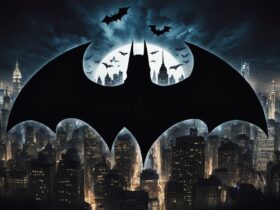Contents
Early Beginnings
In the late 19th century, the Lumière brothers introduced the concept of moving pictures, sparking the birth of cinema. However, it was not until the early 20th century that Hollywood emerged as the epicenter of the film industry. The abundance of sunlight and diverse landscapes in California attracted filmmakers, leading to the establishment of studios and production companies.The Silent Era
During the silent era, from the late 1890s to the late 1920s, movies relied solely on visual storytelling. Silent films like “The Birth of a Nation” and “Metropolis” showcased the power of cinematic artistry, paving the way for groundbreaking techniques and narrative structures.The Golden Age of Hollywood
The 1930s to the 1950s marked the Golden Age of Hollywood, characterized by the studio system and the rise of iconic movie stars. Studios such as Paramount, MGM, and Warner Bros. dominated the industry, producing legendary films like “Gone with the Wind” and “Casablanca.” The glamour and escapism offered by these films provided solace during the challenging times of the Great Depression and World War II.The Studio System
Under the studio system, actors, directors, and crew members were contracted to specific studios, granting the studios control over every aspect of film production. This system allowed for efficient mass production of movies but also limited creative freedom for many artists. However, it laid the foundation for the rise of Hollywood as a cultural powerhouse.Technological Advancements
The history of Hollywood is intertwined with significant technological advancements. The transition from silent films to “talkies” with synchronized sound revolutionized the industry. Innovations like Technicolor and CinemaScope brought color and widescreen experiences to the silver screen, captivating audiences and enhancing storytelling possibilities.The Rise of Blockbusters
In the 1970s and 1980s, Hollywood witnessed the emergence of blockbusters like “Star Wars” and “Jaws.” These big-budget, high-concept films attracted massive audiences and generated unprecedented box office success. The blockbuster era marked a shift in the industry, with studios focusing on profit-driven ventures and franchises.Hollywood and World War II
World War II had a profound impact on Hollywood. The industry played a significant role in supporting the war effort by producing propaganda films and boosting morale. Movies like “Casablanca” and “Mrs. Miniver” reflected the spirit of the time and showcased Hollywood’s ability to engage with pressing social and political issues.The Post-War Era
After World War II, Hollywood faced challenges from television and the rise of international cinema. However, the post-war era also witnessed the emergence of influential filmmakers like Alfred Hitchcock and Billy Wilder, who pushed the boundaries of storytelling and filmmaking techniques.New Hollywood and Independent Filmmaking
In the late 1960s and 1970s, a wave of new directors emerged, challenging the traditional Hollywood formula. Directors like Martin Scorsese, Francis Ford Coppola, and Steven Spielberg introduced a new era of filmmaking, marked by gritty realism and auteur-driven narratives. This period also saw the rise of independent filmmakers, who brought fresh perspectives and diverse voices to the forefront.Hollywood in the Digital Age
The advent of digital technology revolutionized the filmmaking process. From CGI (Computer-Generated Imagery) to digital distribution, Hollywood embraced new tools and techniques to enhance storytelling. Movies like “Jurassic Park” and “Avatar” showcased the possibilities of digital effects, taking audiences on immersive journeys.Global Impact
Hollywood’s influence transcended national borders, shaping cultures and inspiring filmmakers worldwide. The global reach of Hollywood movies helped establish English as the language of cinema, and filmmakers from different countries sought to emulate the Hollywood style while infusing their own cultural elements.Diversity and Representation
In recent years, Hollywood has faced scrutiny for its lack of diversity and representation. However, there has been a growing push for inclusivity, with filmmakers and audiences demanding more authentic and diverse stories. Movies like “Black Panther” and “Crazy Rich Asians” have proven the commercial and critical success of diverse storytelling.The Future of Hollywood
As technology continues to evolve, Hollywood faces new challenges and opportunities. Streaming platforms have disrupted traditional distribution models, giving rise to original content and creating new avenues for filmmakers. The future of Hollywood lies in its ability to adapt to changing audience preferences and embrace innovative storytelling methods.Conclusion
The history of Hollywood movies is a testament to the power of storytelling and the impact of cinema on society. From the early days of silent films to the digital age, Hollywood has shaped popular culture and influenced generations of moviegoers. While the industry has faced its fair share of challenges, it has always managed to reinvent itself and captivate audiences worldwide.Hollywood’s Failure to Accurately Represent Afghan Culture
Is Will Smith’s Journey in Hollywood Similar to the Overall History of Hollywood Movies?
Will smith’s inspiring journey in Hollywood mirrors the ever-evolving landscape of the film industry. Despite initial setbacks, he rose to become one of the industry’s most successful and influential actors. Similarly, Hollywood movies have undergone transformations and embraced diversity, resulting in groundbreaking narratives and greater representation. Smith’s journey is a testament to resilience and adaptation, reflecting the broader trajectory of Hollywood movies.
FAQs
- Are Hollywood movies only made in English?
- While English-language movies dominate Hollywood, there are also movies made in other languages, especially with the rise of international cinema.
- Who is considered the first movie star in Hollywood?
- Florence Lawrence is often credited as the first movie star in Hollywood.
- What is the highest-grossing Hollywood movie of all time?
- As of 2021, the highest-grossing Hollywood movie of all time is “Avengers: Endgame.”
- How has Hollywood responded to calls for diversity and representation?
- Hollywood has made efforts to increase diversity and representation in recent years, with more inclusive casting and storytelling, although there is still progress to be made.
- How has the rise of streaming platforms impacted the movie industry?
- Streaming platforms have disrupted traditional distribution models, leading to the production of more original content and changing audience viewing habits.







